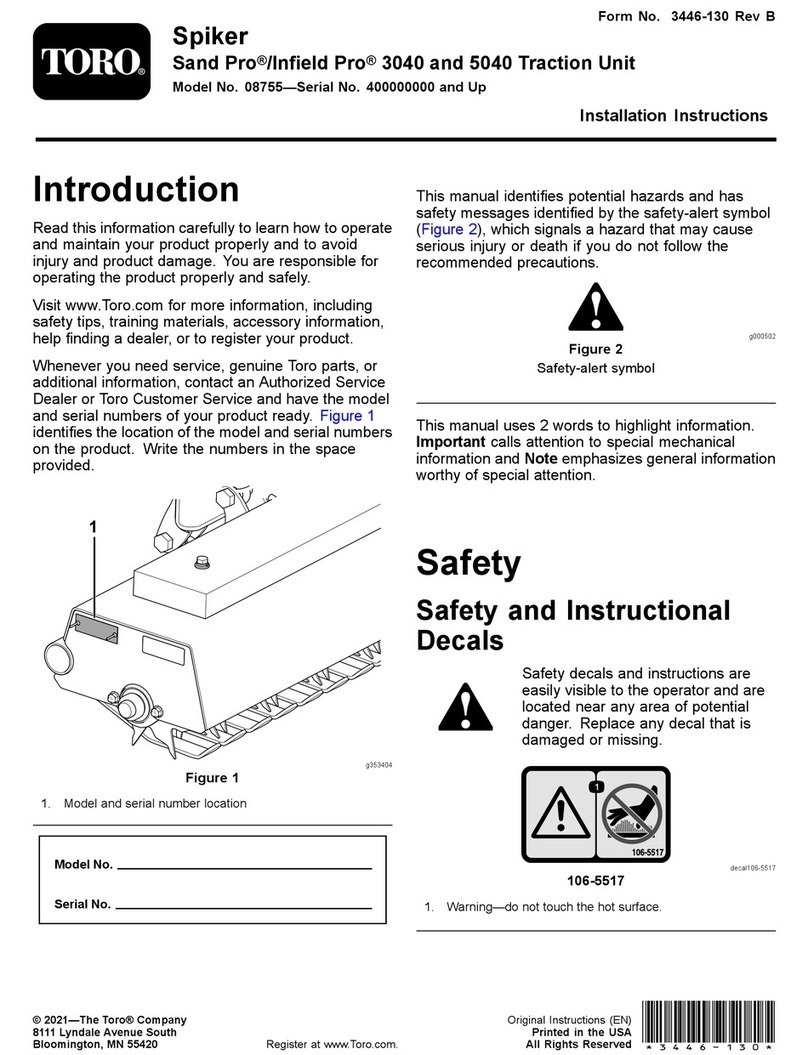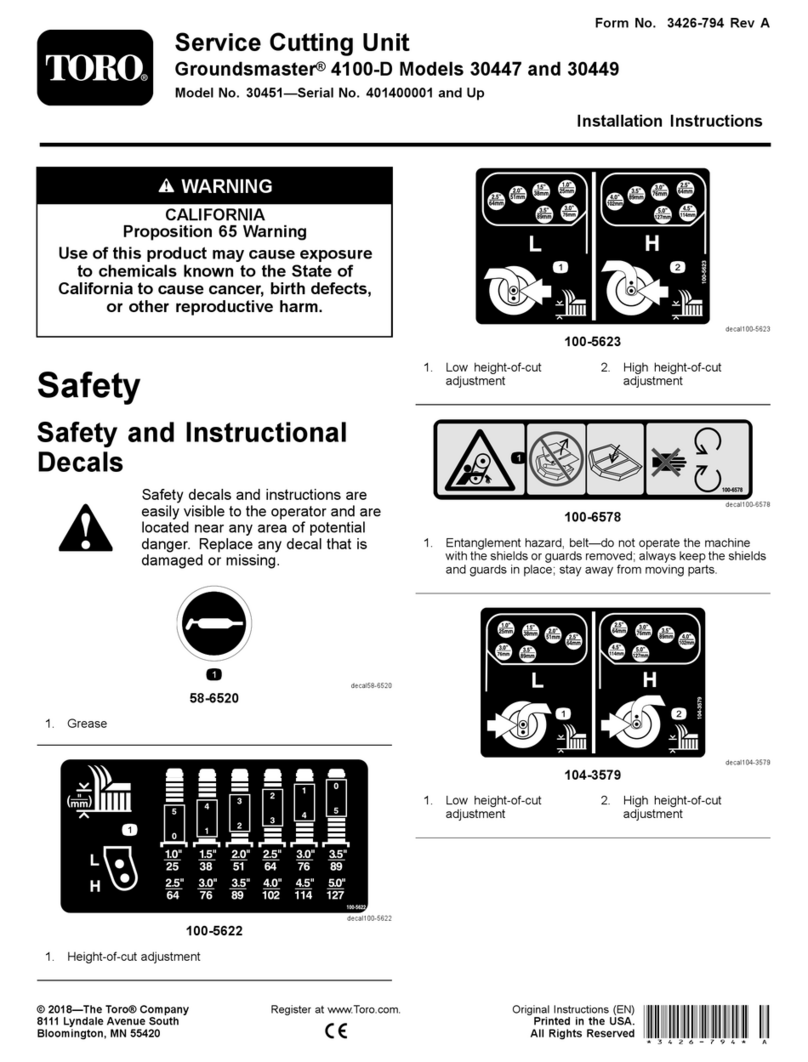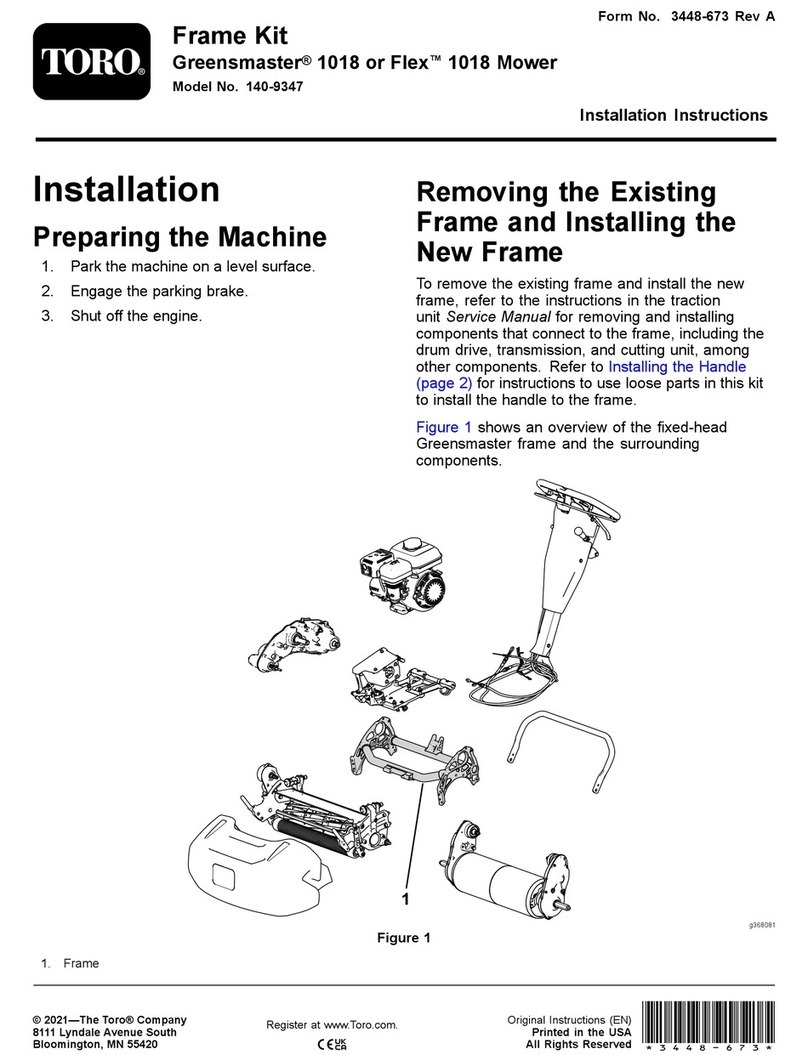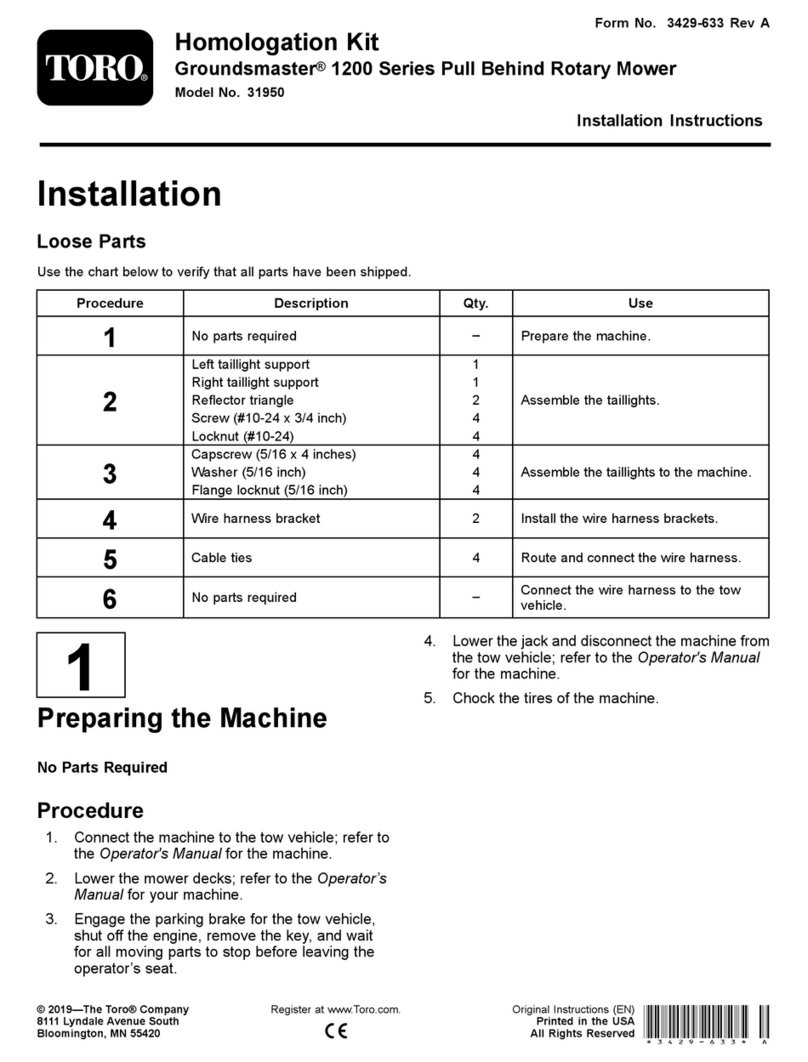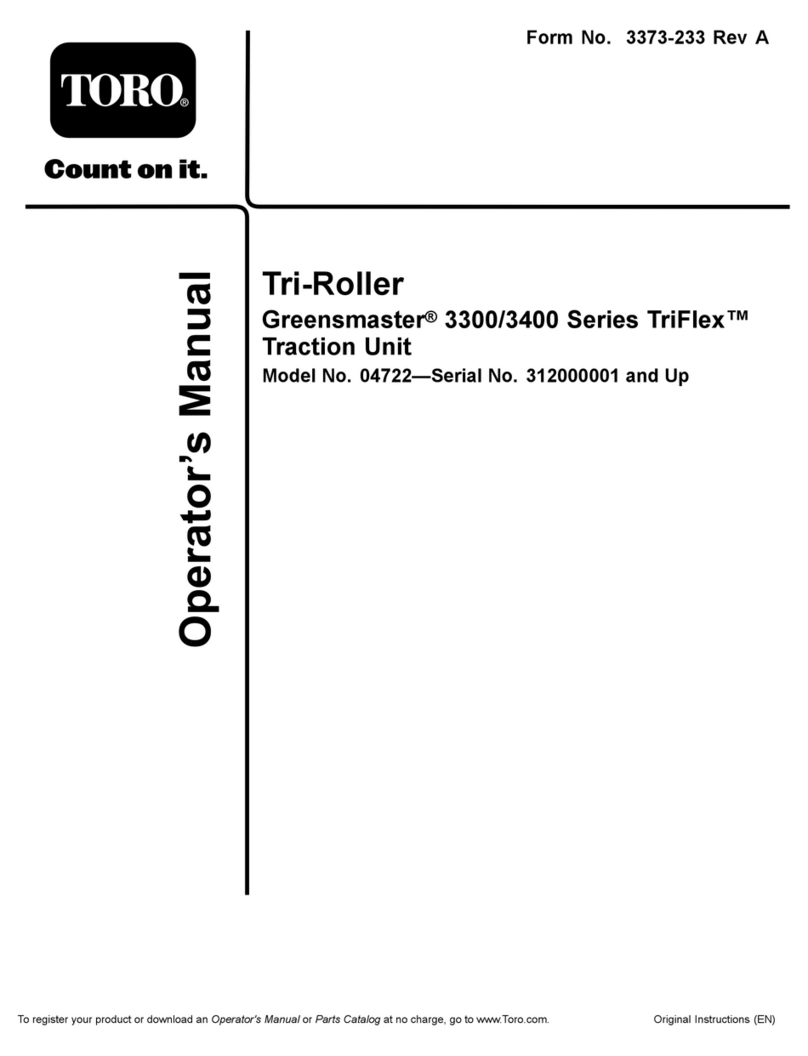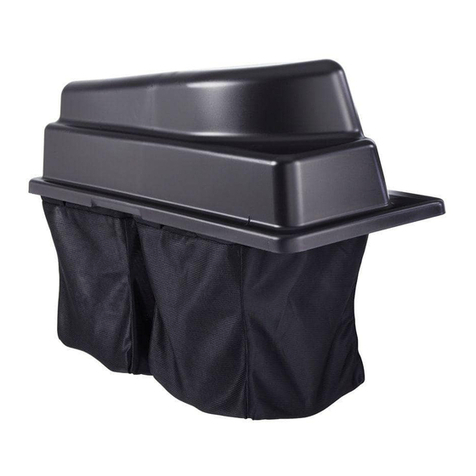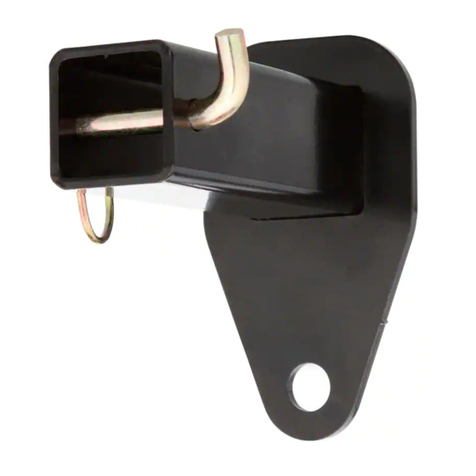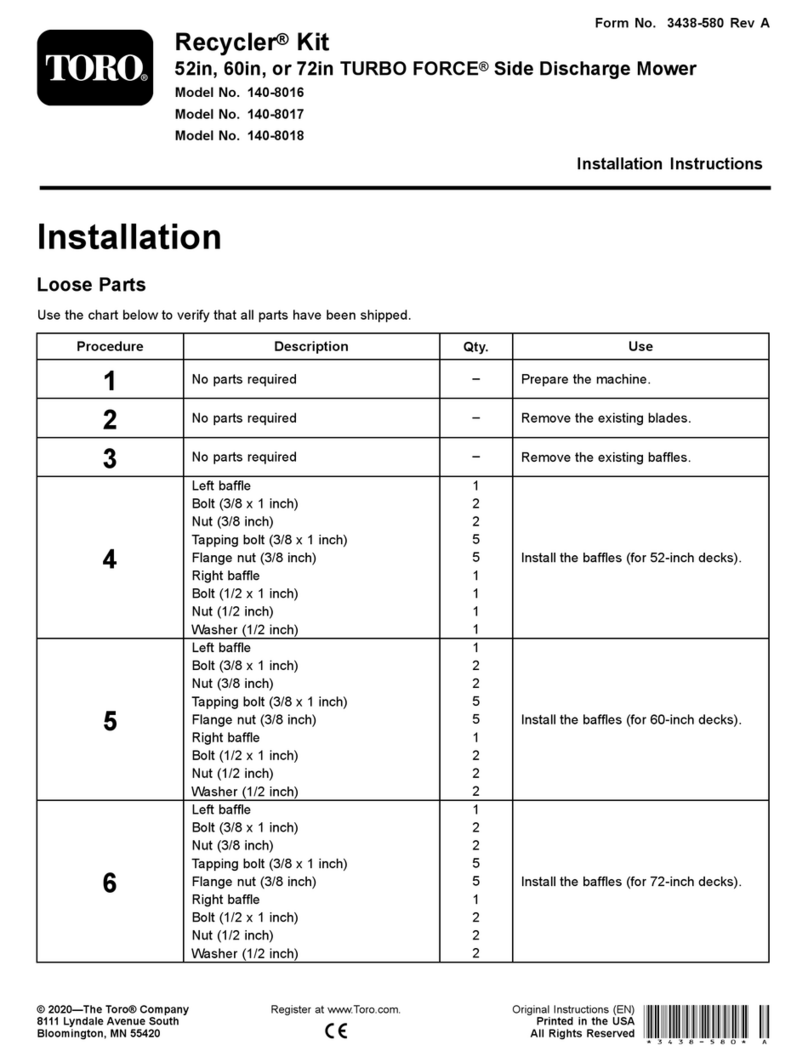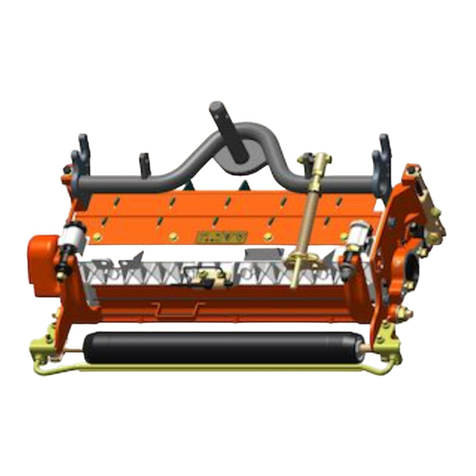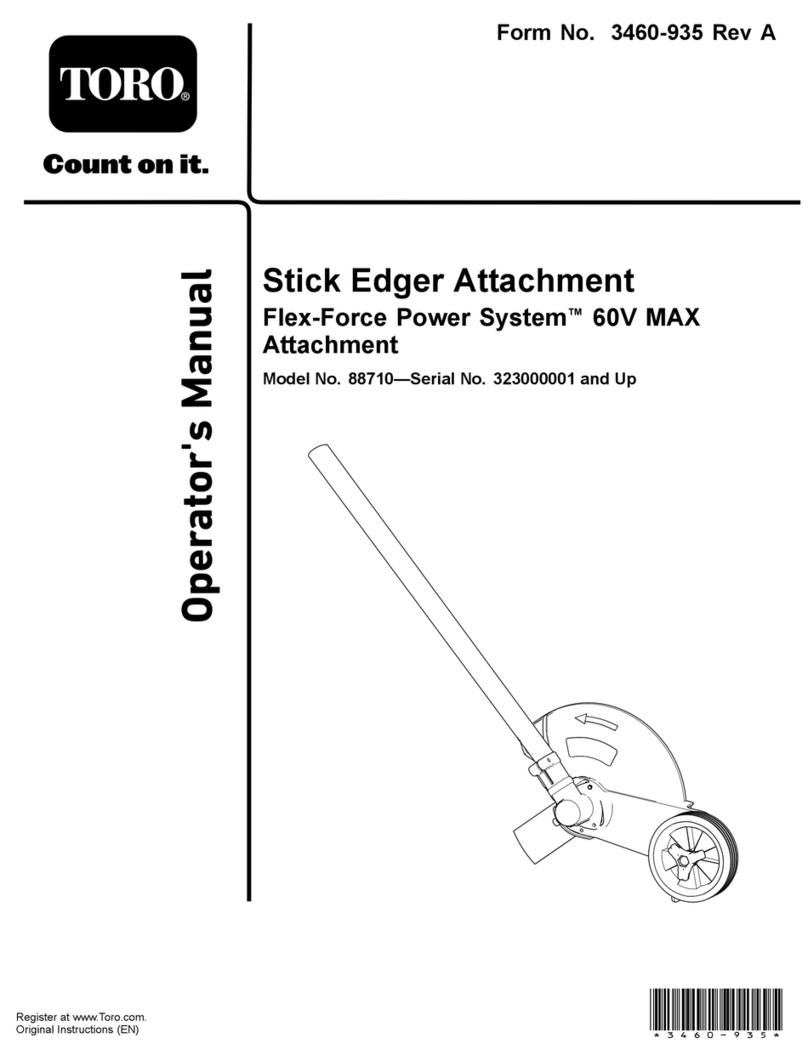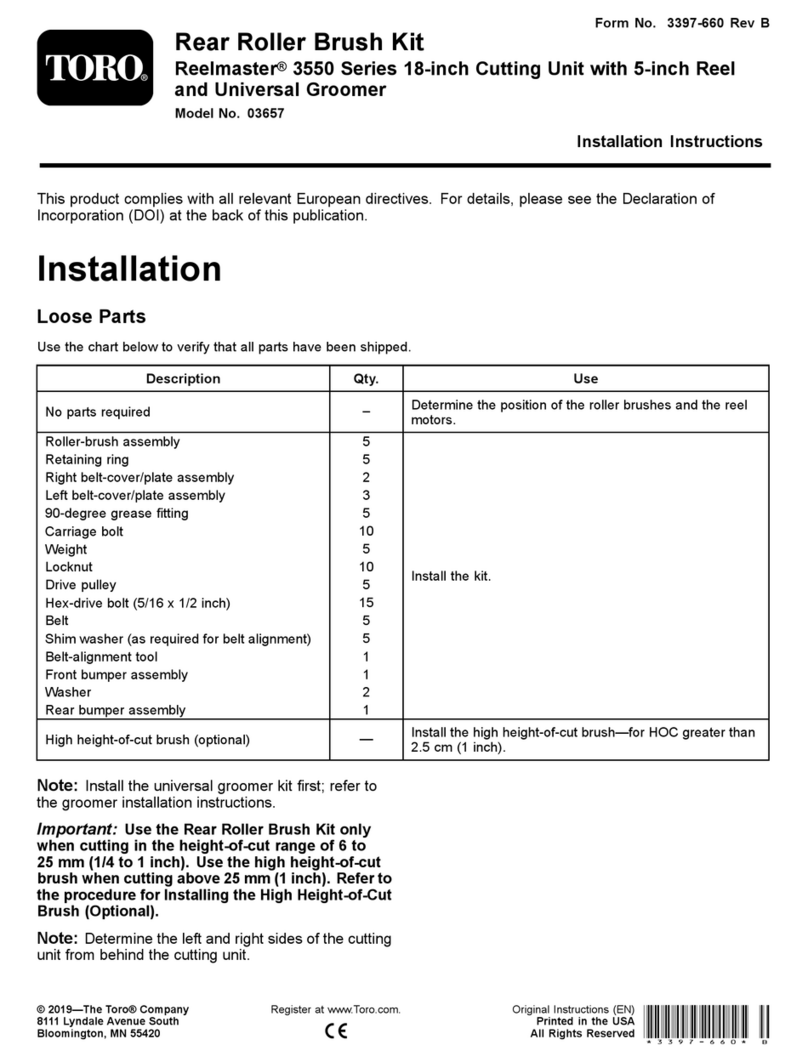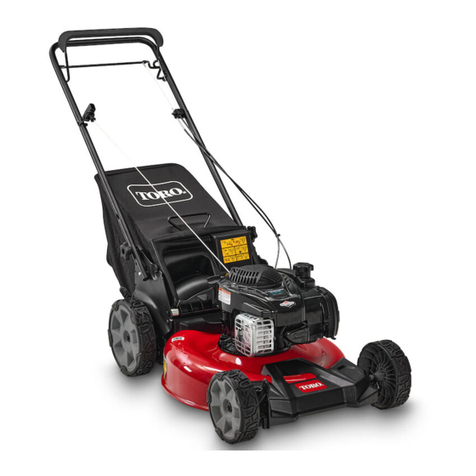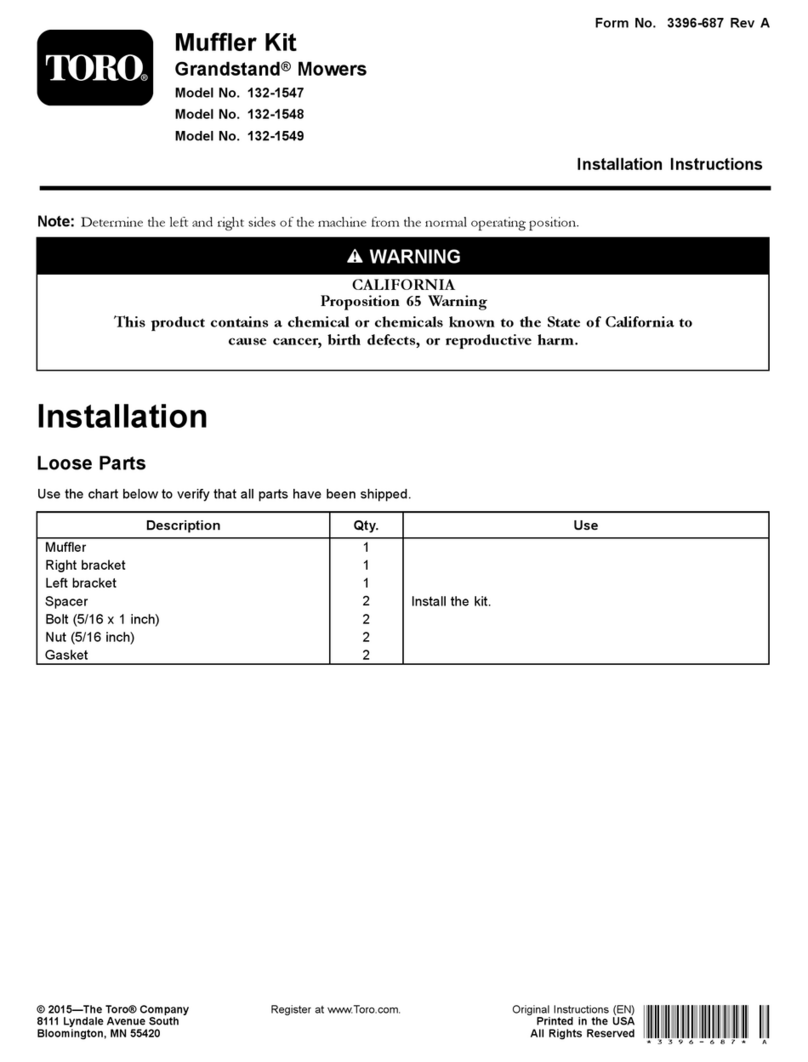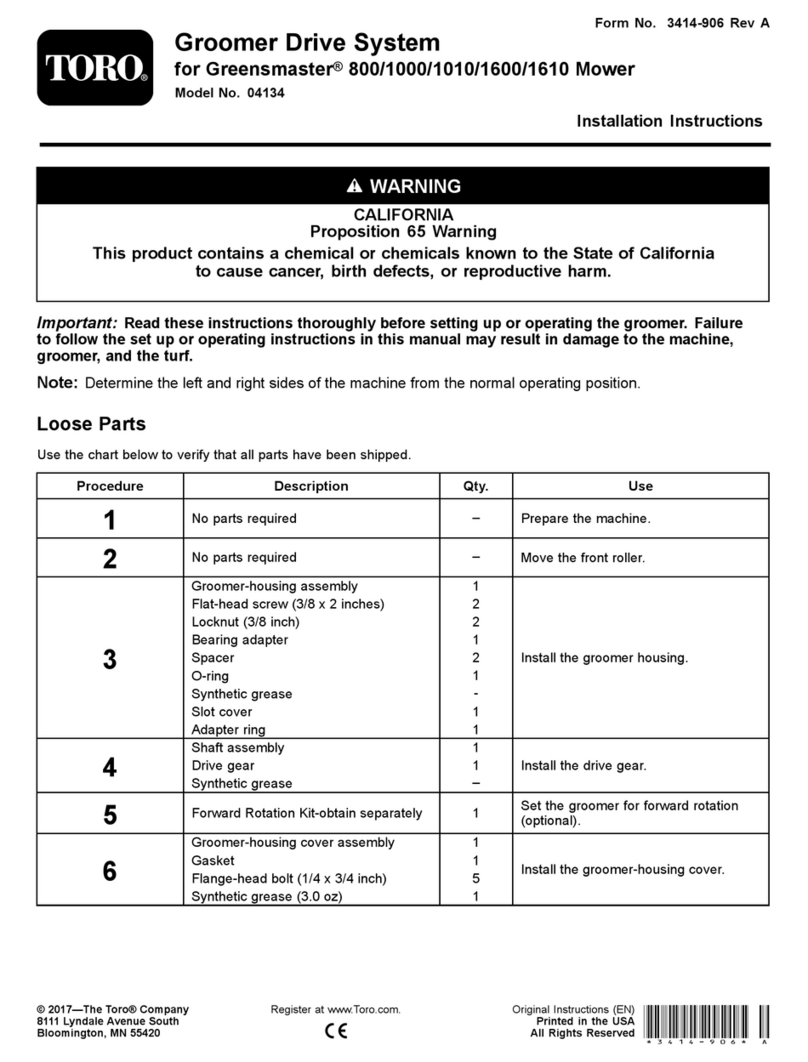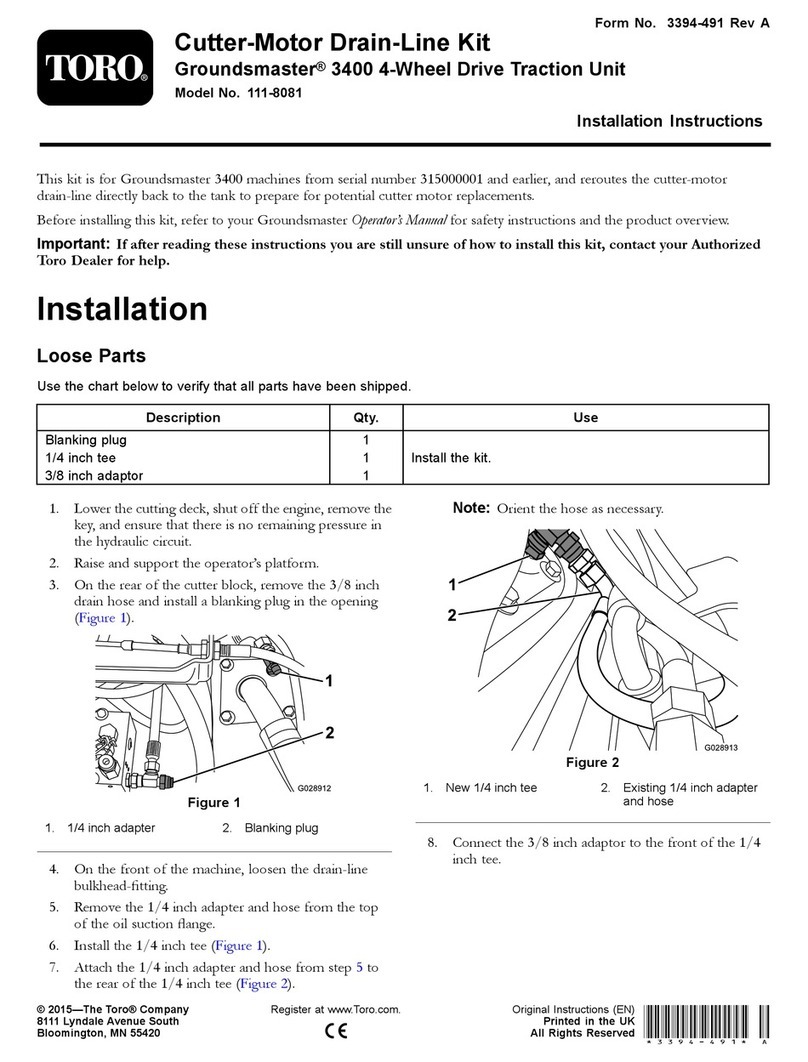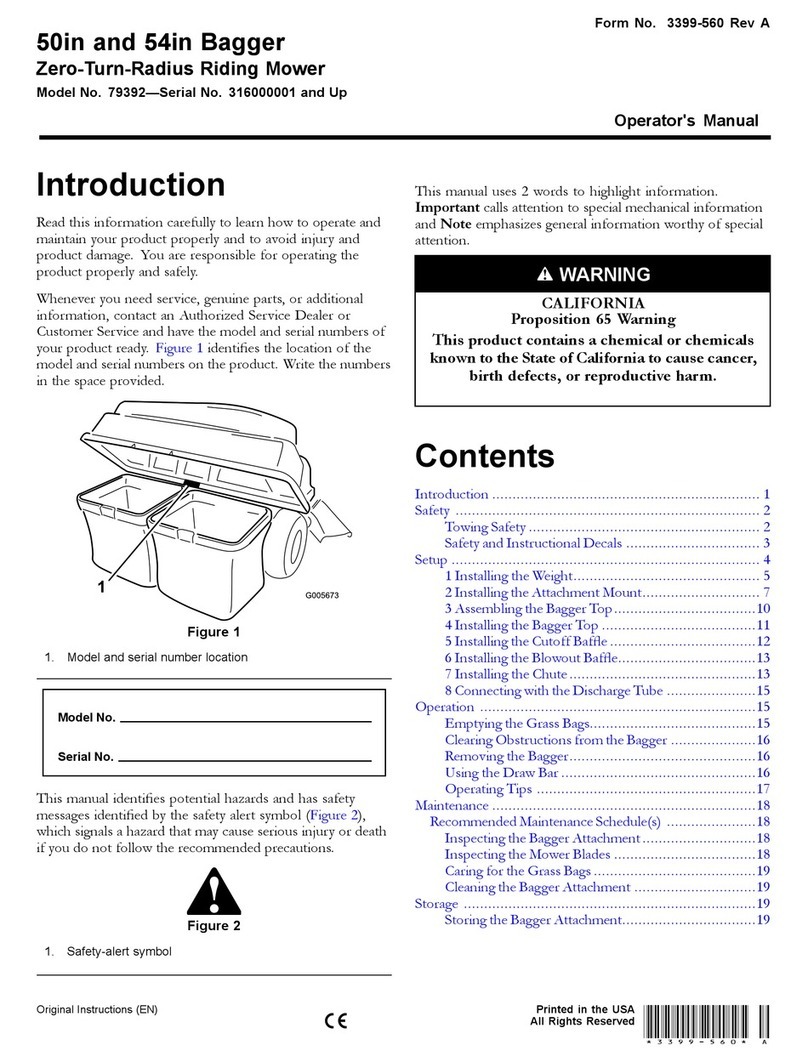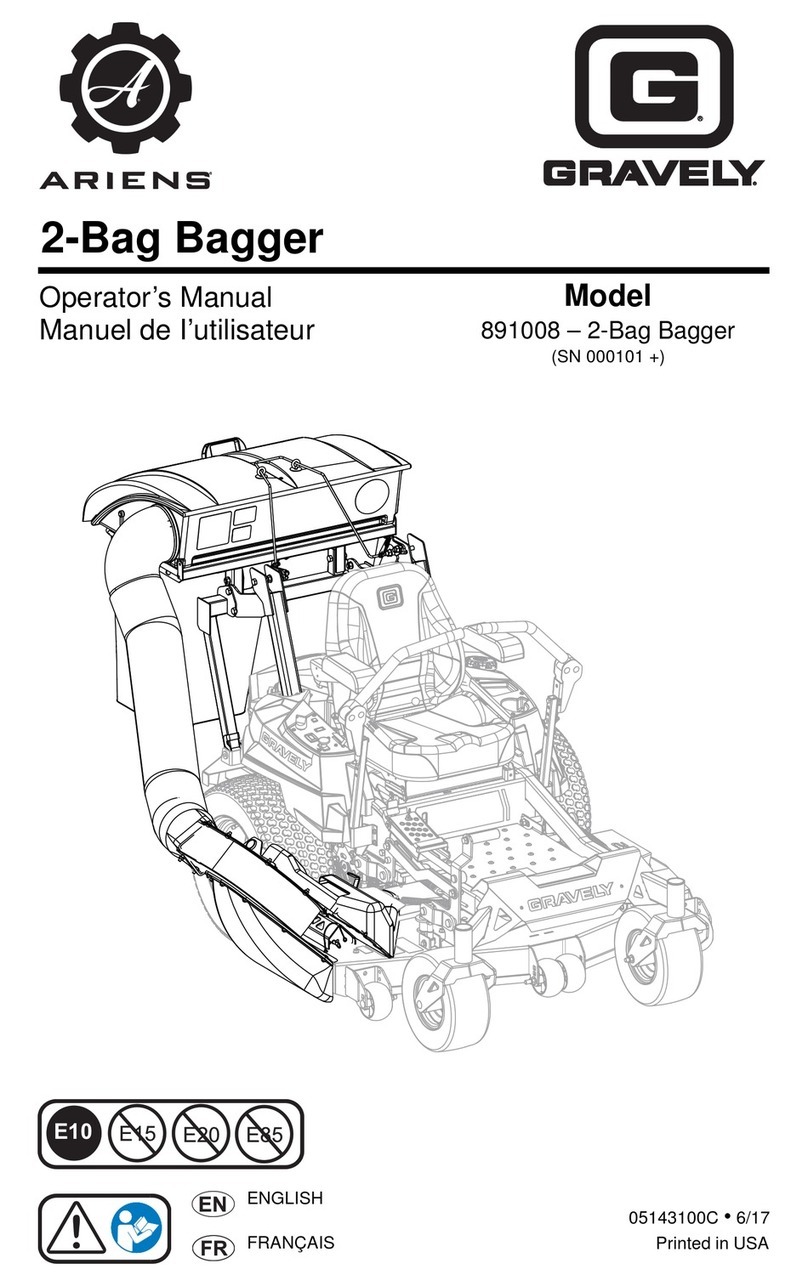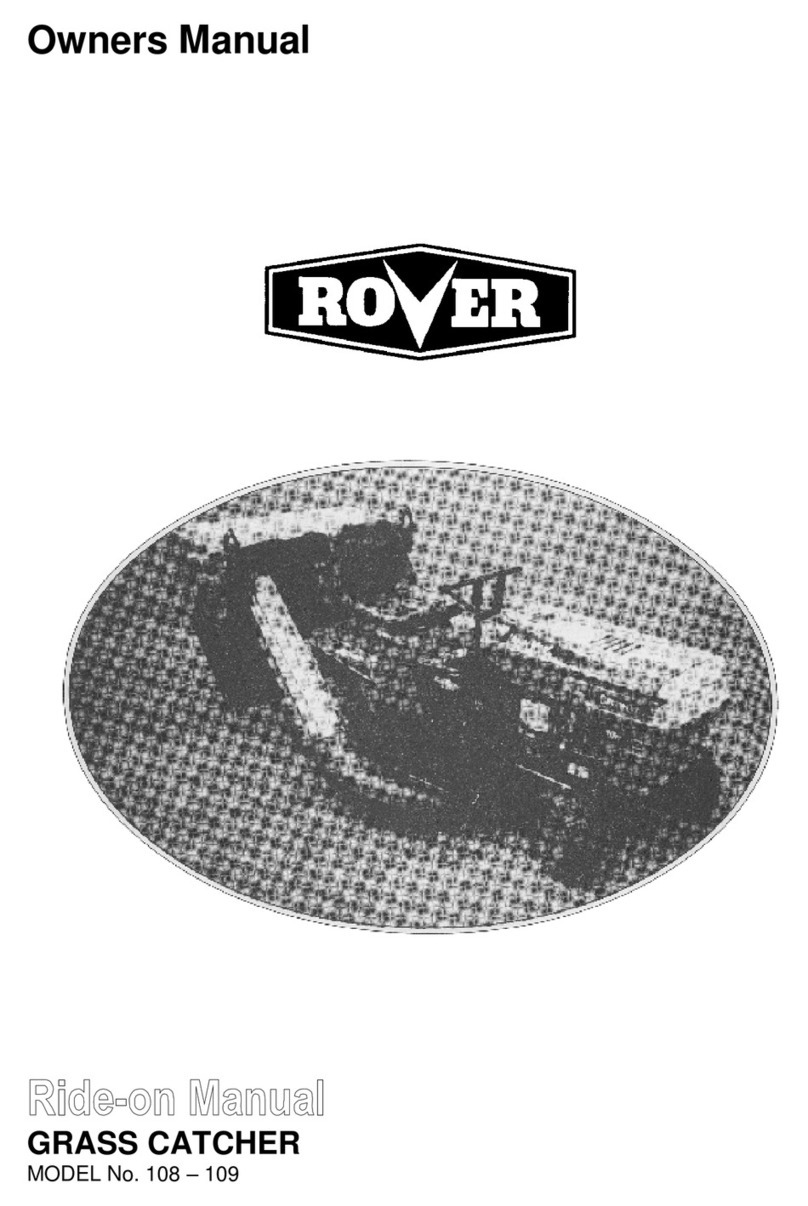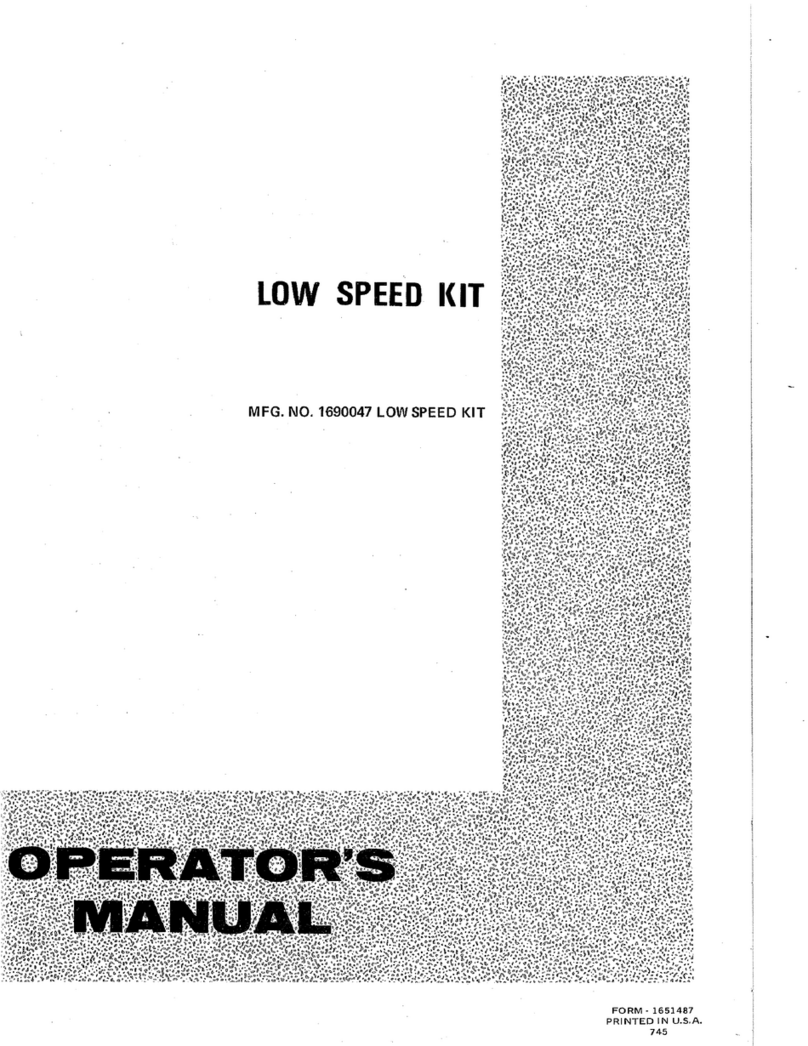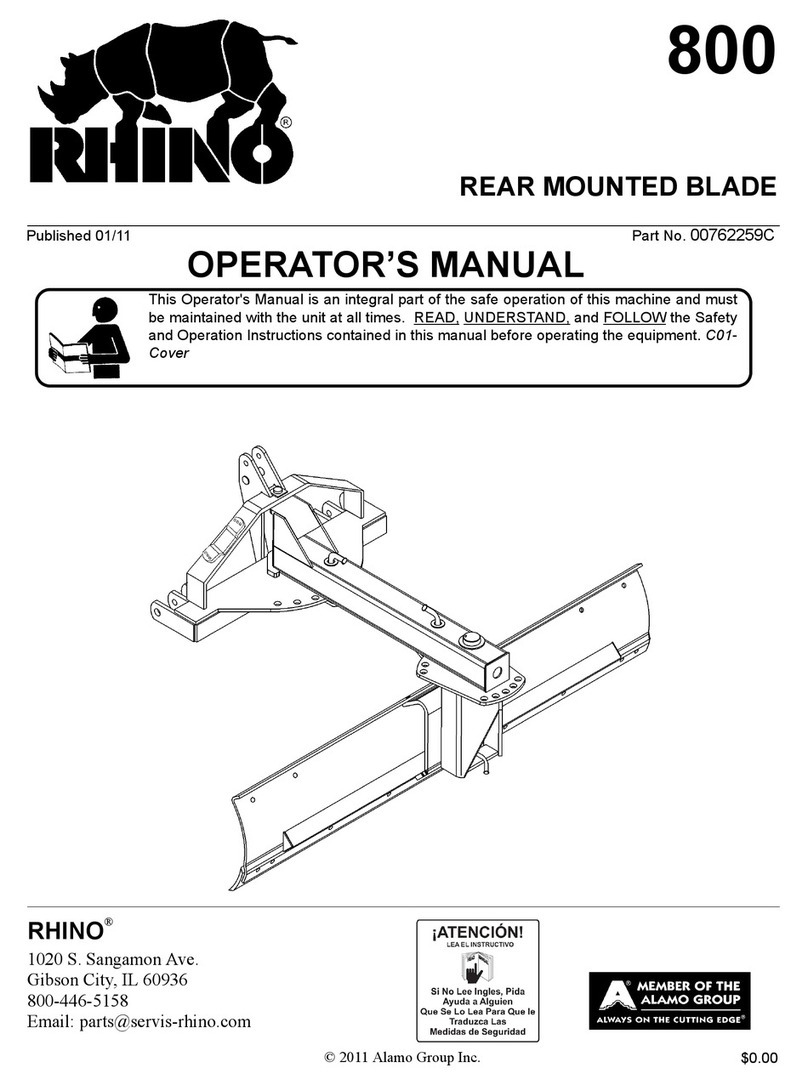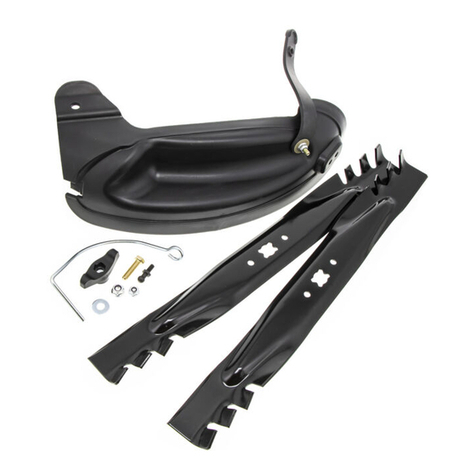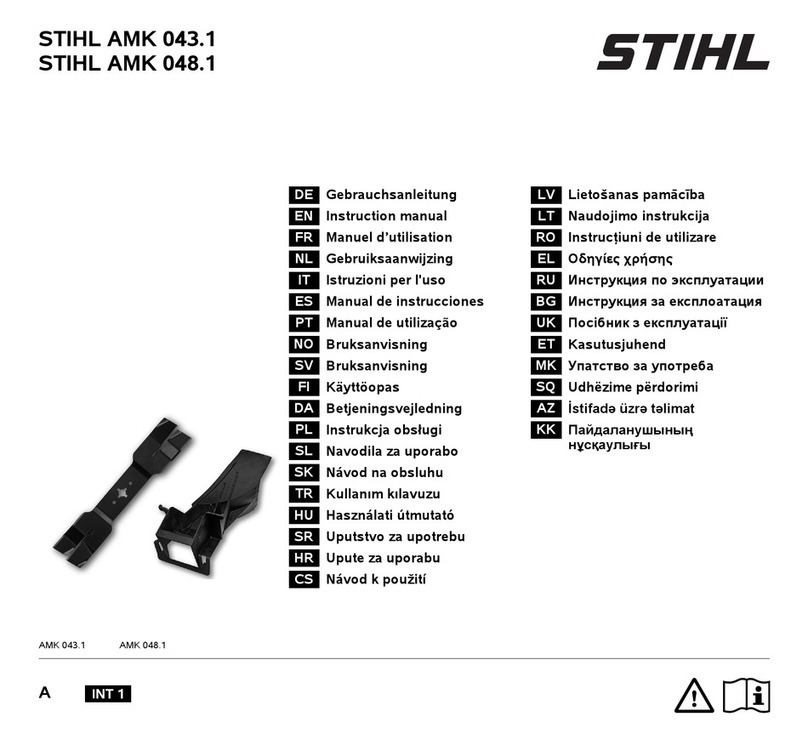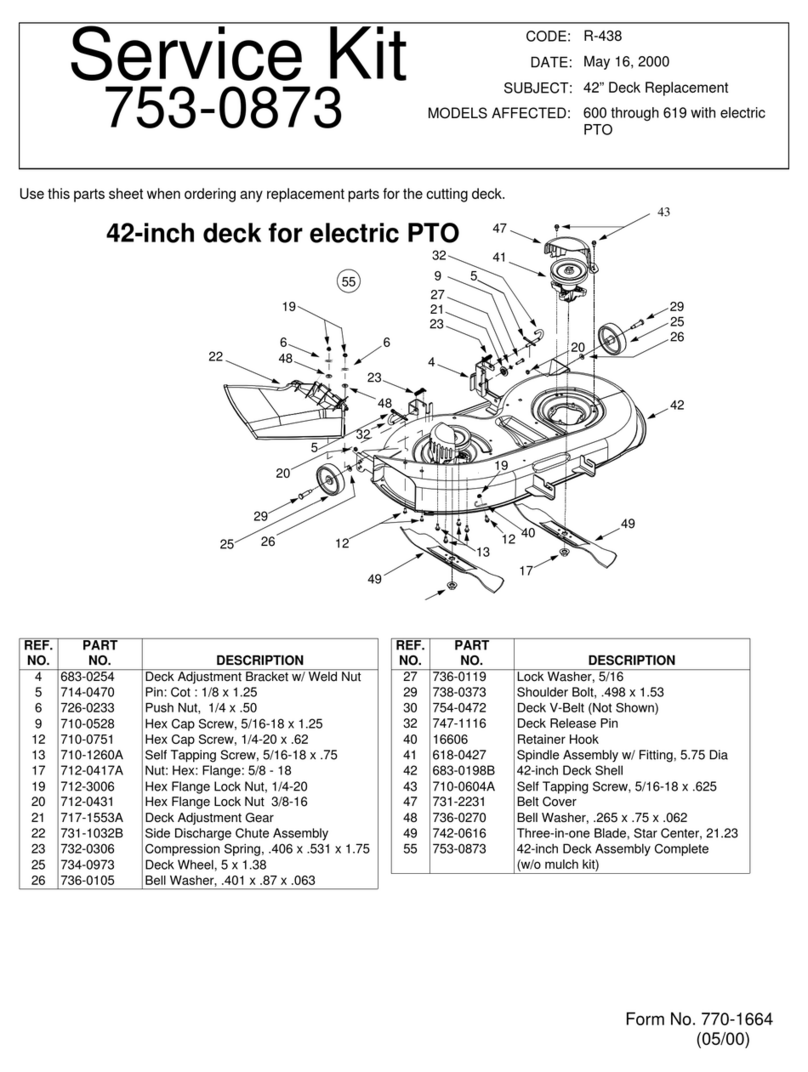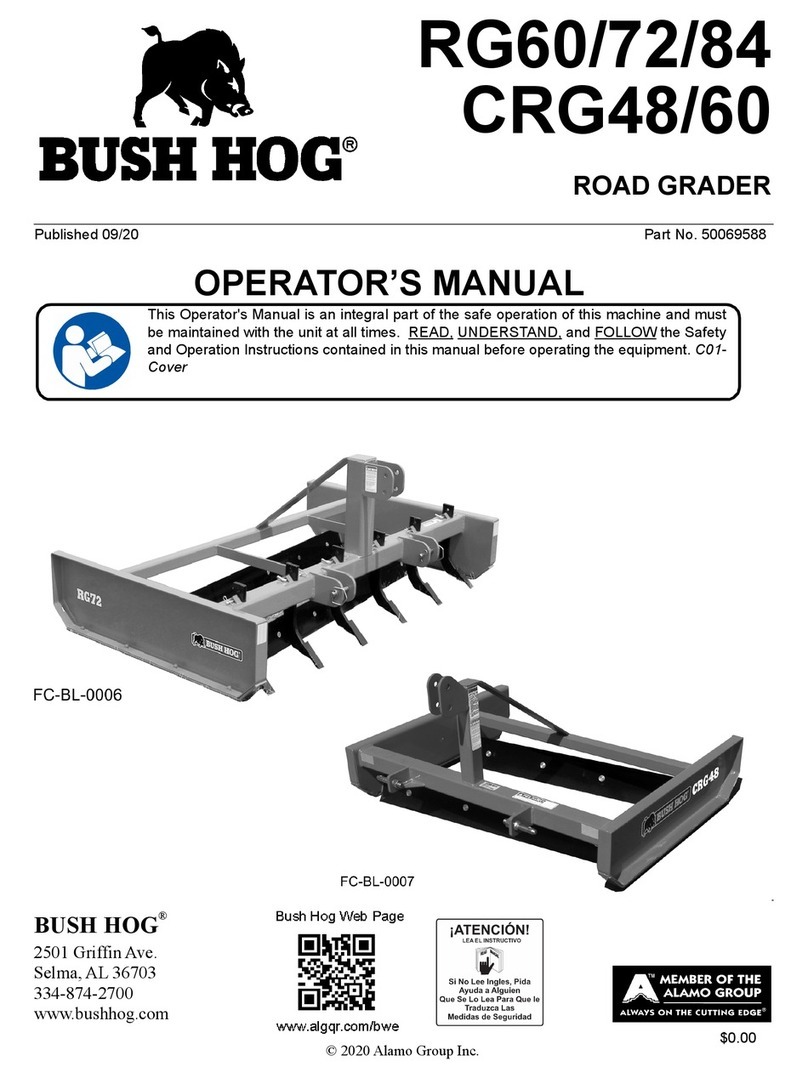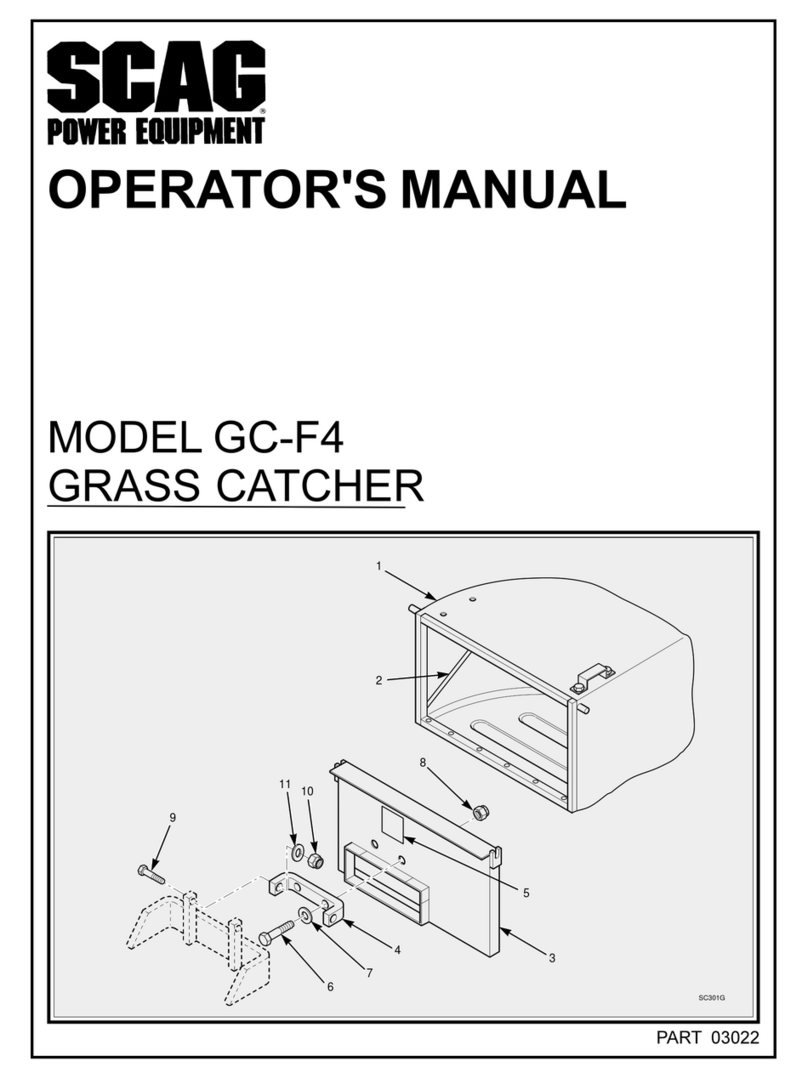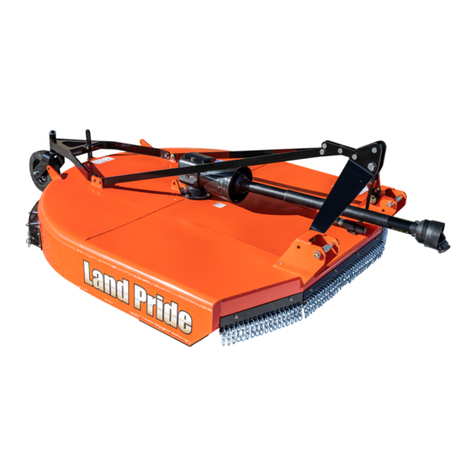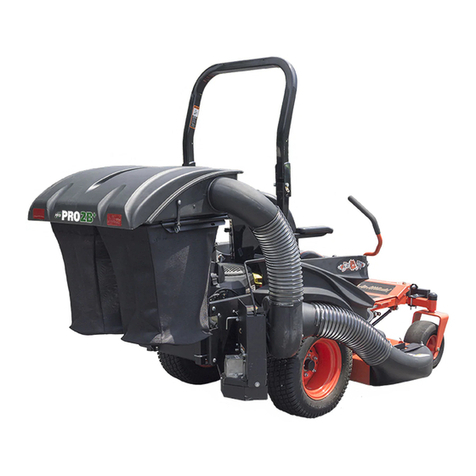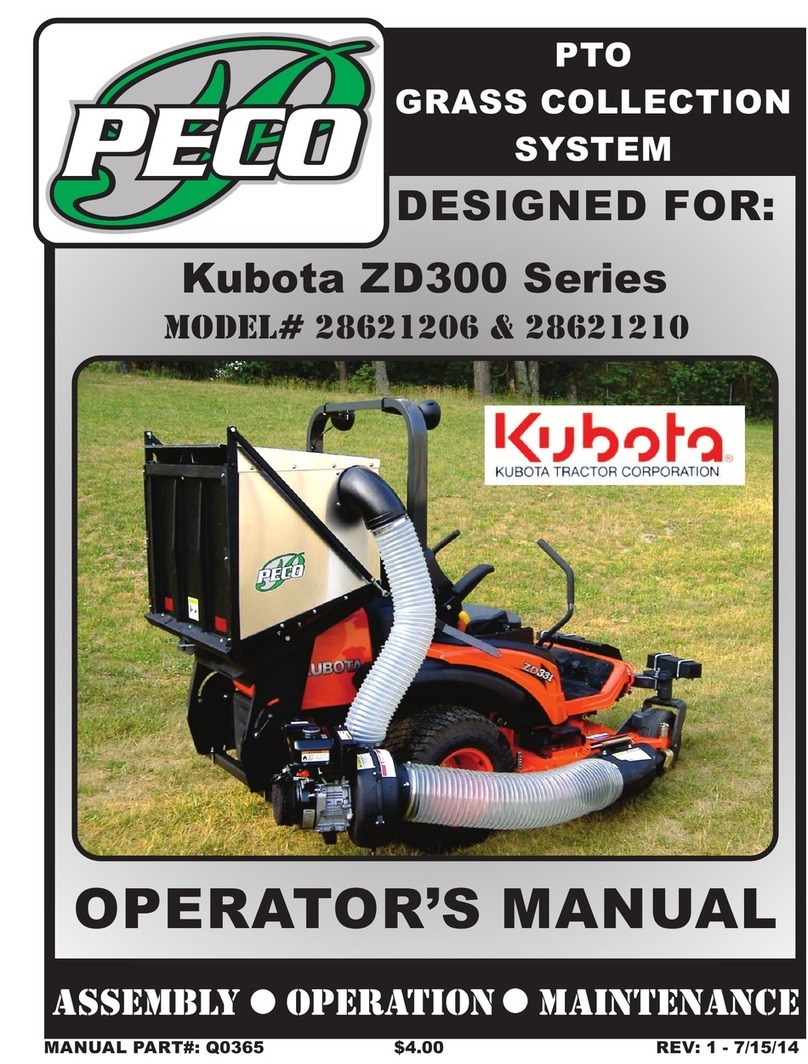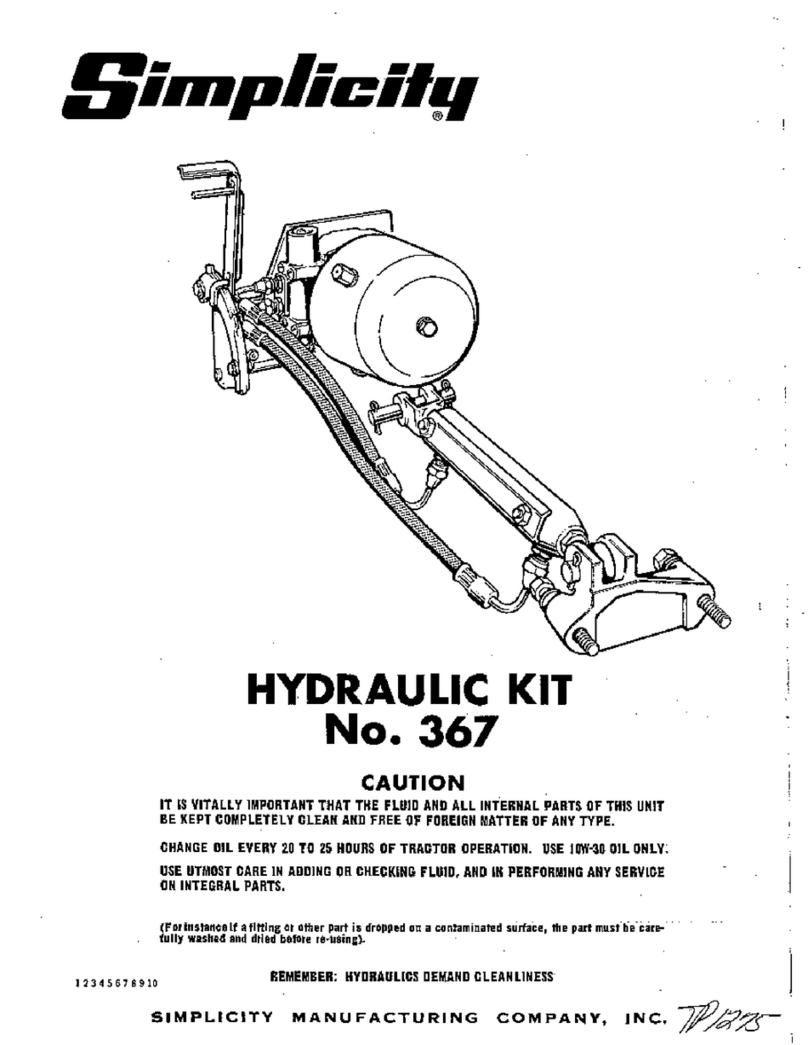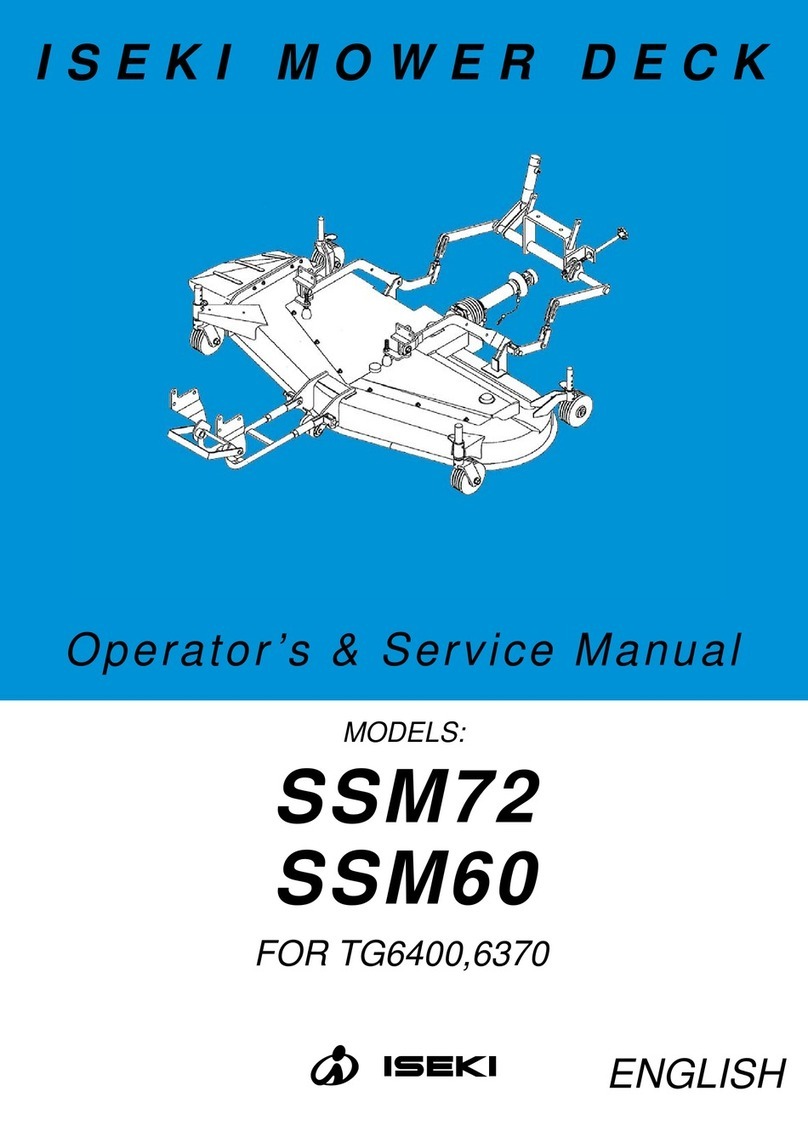Note: When backlapping, the front units all operate
together, and the rear units operate together.
1. Position the machine on a level surface, lower the
cutting units, stop the engine, engage the parking
brake, and move the Enable/Disable switch to the
Disable position.
2. Unlock and raise the seat to expose the controls.
3. Open the control cover and turn the height-of-cut
selection knob to position “P”.
Note: Backlapping speed may be increased by
moving the height-of-cut selection knob toward to
‘A”. Each position will increase speed
approximately 60 rpm. After changing the selector,
wait 30 seconds for the system to respond to the
new speed target.
4. Make initial reel-to-bedknife adjustments for
backlapping on all cutting units that are to be
backlapped.
5. Start the engine and run it at idle speed.
6. Select either front or rear on the backlap switch to
determine whether front or rear reels will be
backlapped.
7. Move the Enable/Disable switch to the Enable
position. Move the Lower Mow/Lift control
forward to start backlapping operation on
designated reels.
8. Apply lapping compound with a long handle brush
(Toro Part No. 29-9100). Never use a short handled
brush.
9. If reels stall or become erratic while backlapping,
the reel control light will begin to blink and the
reels will turn off. If this occurs, turn the height-
of-cut selection knob one position closer to “A’.
Then toggle the Enable/Disable switch to the
Disable position followed by the Enable position.
To resume backlapping, move the Lower Mow/Lift
control lever forward.
10. To make an adjustment to the cutting units while
backlapping, turn reels OFF by moving the Lower
Mow/Raise lever rearward; move the
Enable/Disable switch to Disable and turn the
engine OFF. After adjustments have been
completed, repeat steps 5–9.
11. Repeat the procedure for all cutting units to be
backlapped.
12. When backlap operation has been completed,
return the backlap switch to OFF, lower the seat
and wash all lapping compound off the cutting
units. Adjust cutting unit as needed.
IMPORTANT: If the backlap switch is not returned to
the OFF position after backlapping, the cutting units
will not raise or function properly.
9
Reels may stall while backlapping. do not attempt to
restart the reels by hand, or touch the reels while
backlapping. Stop the engine and turn the height-of-
cut knob one position toward “A”.
DANGER
To avoid personal injury, never place hands
or feet in the reel area while the engine is
running. Changing engine speed while
backlapping may cause reels to stall. Never
change engine speed while backlapping. Only
backlap at idle engine speed. Never attempt to
turn reels by hand or foot while the engine is
running.
DANGER
To avoid personal injury, be certain that you
are clear of the cutting units before
proceeding.
DANGER
Backlapping Cutting Units
